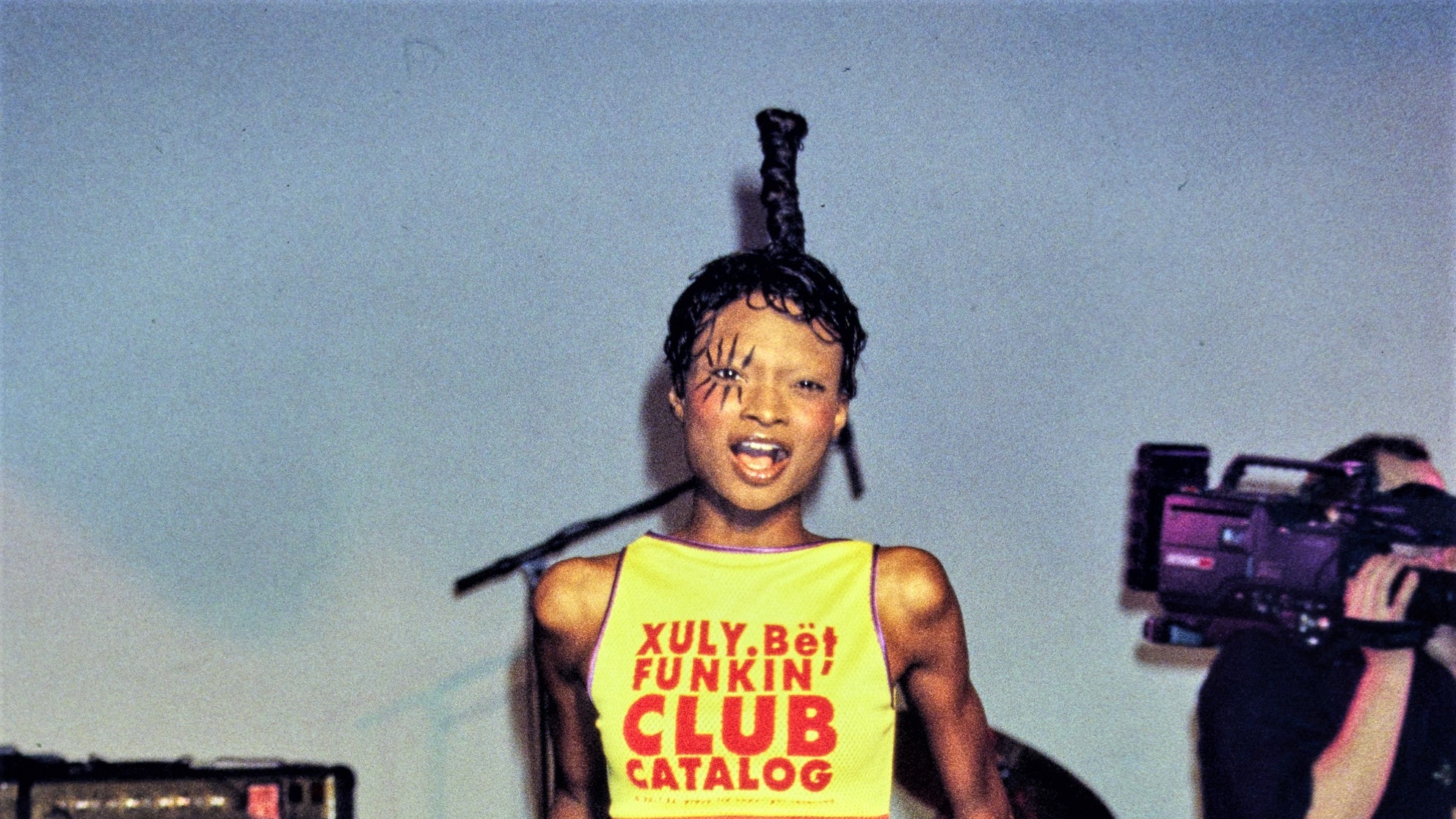In his own words, Kouyaté walks Vogue Runway through his spring 1995 collection.
“The show took place at Le Palace in September 1994, followed by an after-show at Le Bataclan with Cathy and David Guetta as DJs! We indeed did a live [performance in the show space], but right after the show. Jenny Blue played, and I had this band, This Is Not a Machine Gun, in which I was the bass player, so I jammed after the show!
I had gotten really interested in the idea of recycling sports fabrics. These are modern fabrics and I had a passion for these synthetics materials, the fact that they were not biodegradable and that you could reinvent them instead of letting them rot. I had a real interest in these sports brands which are Mastodons in terms of volume; sport being really popular, they had a large access to the public.
[The idea of this kind of collaboration] was utterly new. I had more of a feminine approach than these brands; women were left apart from that movement touching sportswear clothing. Truth be told, there wasn’t even any activewear back then. The wardrobe was so masculine. This collection allowed an opening onto the women’s wardrobe by making it more “active.” I thought there was a part to be taken. I started by recintrer [reworking] these sport jackets by giving them a more feminine dynamic. The main idea was to create a collection that would talk to girls since it didn’t exist. Which is why with Jacintha’s look, for example (Look 33), we derived a dress into a jumpsuit! We also worked a lot on soccer tops that we often turned into blouses or jackets (Look 25).
[I’ve always loved stretch because of] le confort! This is where my passion for these materials comes from, a comfort impossible to find in natural materials, a performance [material] where you can move. It’s a form of emancipation, to free yourself from clothing that no longer has that plush weight.
We collaborated with FFF, which stands for “Fédération Française de Fonck” on the collection’s prints [including the baby’s head (Look 9)]. It was the band of the moment, led by Yarol Poupaud. The baby was their symbol [and was] on FFF’s album cover.
